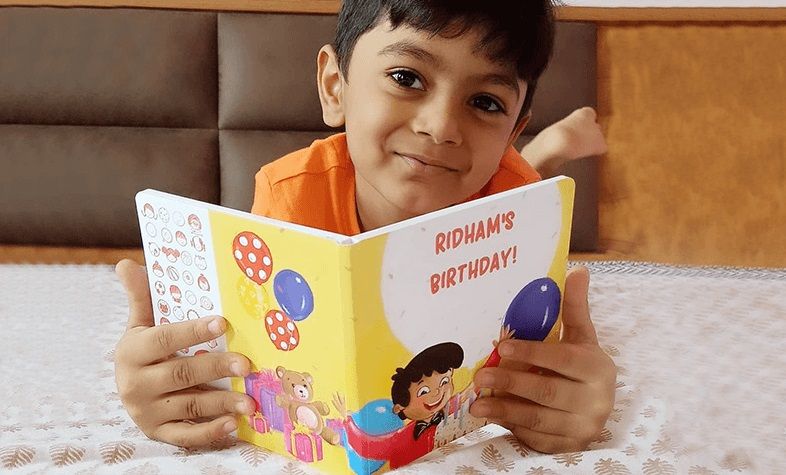Storytime is much more than flipping through pages or reading aloud—it’s a special opportunity to connect with your child and nurture their growing mind. Whether it’s a colorful board book for your baby or a story filled with adventure for your preschooler, these moments spark imagination, build language skills, and create a deep love for learning. For children between 6 months and 5 years, story time can lay the groundwork for so much—better communication, stronger focus, and even emotional growth.
In this blog, we’re diving into the role story time plays in your child’s development and why it’s such an important part of these early years. So, without waiting any longer, let’s get started!
Benefits of Storytime for a Child’s Development
1. Boosts Brain Growth
Storytime helps kids’ brains grow and learn in amazing ways. As they listen to stories, their minds start creating pictures and connecting ideas, which builds thinking and language skills. It also strengthens their ability to focus, pay attention, and remember things, laying a strong foundation for learning as they grow.
2. Encourages Curiosity and Wonder
When kids hear stories, they’re introduced to new worlds, characters, and ideas. This naturally makes them curious and eager to know more. They start imagining what it would feel like to be part of those stories and begin asking questions about them. Over time, this curiosity makes them excited about learning and exploring new things.
3. Supports Reading and Writing Skills
Storytime is a simple way to help children become better readers and writers. As they hear you read, they pick up on how words are spoken and how stories are structured. They start to understand the flow of events and learn new words in the process. All of this makes it easier for them to succeed when they begin reading and writing on their own.
4. Teaches Important Values and Life Lessons
Storytime is a fun way for children to learn about important values and life lessons. Through stories, kids can discover the meaning of kindness, bravery, and perseverance. These lessons help them figure out what kind of person they want to be as they grow up. Teaching values through stories is a great way to introduce these concepts in a way that’s easy for kids to understand and remember.
5. Builds Social Skills
Storytime isn’t just about listening—it’s also about connecting with others. When kids gather together to listen to a story, they have the chance to talk with each other, share their thoughts, and work together. This helps them build communication skills, learn to cooperate, and make new friends. All of these things are important for developing healthy social skills that they’ll use throughout their lives.
6. Strengthens Listening Abilities
Listening is a skill that gets stronger with practice, and story time is a great way for children to do just that. When children are asked to focus on a story, they’re practicing how to pay attention, follow along, and remember details. These skills are important not only for learning in school but for other parts of life, like following instructions at home or even in their future careers. By listening to stories, children are building the foundation for becoming better listeners in all areas of their lives.
7. Encourages Empathy
Storytime is a great way for children to learn empathy, or the ability to understand and share the feelings of others. As kids listen to characters in stories go through different challenges or emotions, they begin to relate to those experiences. This helps them develop a deeper understanding of how others might feel in different situations. Over time, this empathy can help them build stronger relationships with friends and family, and become more caring and compassionate individuals.
8. Strengthens Language Skills
Listening to stories regularly is one of the best ways to help children develop strong language skills. When they hear stories, they are exposed to new words, phrases, and ways of speaking. They begin to understand how sentences are structured and how different words fit together. This not only helps with vocabulary but also boosts their ability to express themselves clearly. As children listen to more stories, they get better at using language to communicate their thoughts and ideas effectively.
9. Sharpening Thinking Skills
Reading activities in everyday life do more than entertain kids—they help develop important thinking skills. When children listen to stories, they practice remembering details, staying focused, and solving problems. They start to recognise how events are connected, guess what might happen next, and understand why characters behave the way they do. These activities lay the foundation for stronger thinking skills that will serve them well as they grow older and face more complex challenges.
10. Growing Emotional Awareness
Storytelling is also important for children’s emotional growth. Through stories, kids get to experience and understand different emotions, from happiness and excitement to fear and sadness. As they connect with the characters in the story, they start to recognise and express their own feelings more clearly. This helps them build empathy, resilience, and emotional intelligence—skills that are key to understanding and relating to others, and managing their own emotions as they grow up.
Storytime Tips and Tricks
1. Pick the Perfect Spot
Choose a quiet, cozy corner away from distractions like doors, toys, or hallways. This will help the kids focus on the books. Make sure the space is well-lit, either with natural light from windows or soft lamps, so no one has to strain their eyes. Also, it’s a good idea to make sure the spot is easy to get to whenever the children want to dive into a book.
2. Select the Right Books
When picking books for story time, think about the children’s ages and what interests them. For younger kids, colourful picture books work great, while older children might enjoy chapter books with exciting adventures. You can also make story time more interactive by choosing books with flaps to lift or textures to feel. These kinds of books keep kids engaged and help them feel like they’re part of the story.
Variety is important! Mixing up different types of books, from fantasy and mystery to animals and superheroes, keeps things fresh and fun. There’s something for every child, and adding in a few personalised storybooks can make it even more special. You can find personalised stories at ZooBooStory

3. Getting the Kids Involved in the Story
When you want kids to enjoy story time, it’s all about making the experience interactive. Here are some simple ways to make storytime engaging and exciting.
- Use Fun Voices: Try changing your voice for different characters. You can use accents or funny sounds that match the characters to grab their attention.
- Get Them Involved: Ask questions during the story to help the kids think about what might happen next. Let them join in by acting out scenes or guessing what will come next in the plot. This keeps them thinking and engaged.
- Add Sound Effects: Sounds can make a story much more exciting. You can create rain sounds, footsteps, or animal noises with your voice or simple props.
4. Using Props and Visuals to Bring the Story to Life
Adding props and visuals to your storytelling can make the experience more engaging for kids. Items like puppets, toys, or simple objects like scarves can bring the story to life. Visuals such as pictures and illustrations also help children imagine the scenes better.
Props and visuals not only make the story more fun, but they also encourage creativity and participation. They give kids something they can hold or explore, which deepens their connection to the story.
Here’s how to make the most of props and visuals:
- Pick props that match the characters or events in the story.
- Use visuals to highlight key moments or themes.
- Encourage the kids to interact with the props by letting them touch or move them.
- Rotate props and visuals to keep things fresh and interesting.
5. Making Storytime More Interactive
The best way to keep kids excited about story time is by making it interactive. Here are a few simple ideas to get them involved:
- Act It Out: Encourage the kids to act out parts of the story using their bodies and faces. This helps them connect with the story in a fun way and gets them moving.
- Ask Questions: Pause at important moments and ask the kids what they think is going to happen next. This helps them stay involved and think about the story on a deeper level.
- Create Sound Effects: You don’t need fancy props for sound effects – you can use your own voice or everyday objects to make things like thunder, animal noises, or footsteps.
- Make it a Group Activity: Storytime can be even more fun with a group. Get other kids or family members to join in and share their thoughts or act out parts together.
The more involved and interactive the story, the more fun it will be for the kids!
6. Choose the Right Seating
When setting up your reading area, it’s important to pick seating that makes the space comfortable and inviting. Soft, cushioned chairs or bean bags can be a great choice for younger children, offering a cozy spot where they can relax and enjoy a book. For older children, consider age-appropriate adjustable wooden desks and chairs. These provide a neat, organised space for kids to sit and read, giving them a place where they can focus without distractions. Having the right seating helps create a space where children feel comfortable and ready to explore stories.

Closing Thoughts
Storytime is more than just an activity; it’s a chance to bond with your child and help them grow in so many ways. By sharing stories, you’re nurturing their imagination, building their language skills, and teaching important life lessons. It’s a simple, enjoyable way to help them develop both emotionally and socially. So, make story time a regular part of your day—it’s time well spent!



